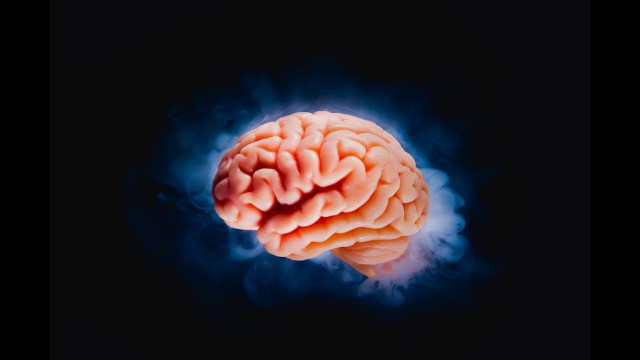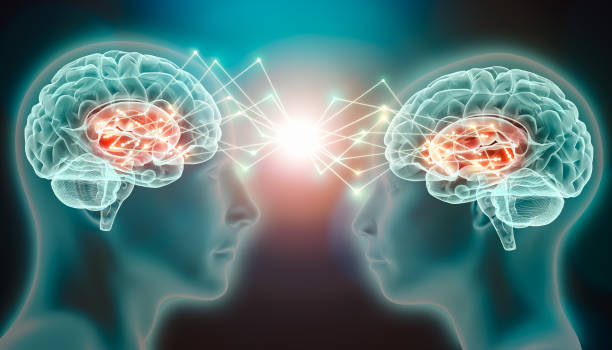In the silence after an argument, when the door slams shut and the house goes quiet, something heavier than sound lingers in the air. It crawls into the corners of your chest and sits there, uninvited. Later, lying in bed, staring at the ceiling, you replay the words you said—or didn’t say. You imagine how things could have gone differently. You rehearse apologies in your mind that may never be spoken aloud.
This is guilt. Or maybe it’s shame. Or maybe both.
They are invisible weights. They do not scar the skin, but they sting just the same. They don’t break bones, but they bend the spirit. People can go about their lives—working, laughing, loving—while quietly carrying the crushing burden of guilt or the slow-burning pain of shame. These feelings are among the most human of all, ancient as language and as complex as the mind itself.
But what actually happens in the brain when we feel guilt or shame? Why do they sometimes motivate us to do better, and other times paralyze us with self-hate? How are these emotions different, and why do they linger long after the triggering moment has passed?
To answer these questions, we must travel into the hidden architecture of the human brain—a place where memory, morality, identity, and emotion are tightly wound together, sometimes beautifully, sometimes painfully.
The Ancient Roots of Conscience
Long before neuroscience gave us scans and circuits, early humans lived in tight-knit communities where survival depended on cooperation. A tribe couldn’t afford freeloaders, cheaters, or threats from within. Those who harmed others—intentionally or not—had to recognize their misstep and make amends. Otherwise, the social glue that held the group together could dissolve.
This evolutionary backdrop shaped the emotional circuits that live inside us today. Guilt and shame are not just inconvenient feelings—they are survival mechanisms. They evolved as internal moral compasses, guiding us to behave in ways that preserve social bonds.
But unlike fear, which protects us from external danger, guilt and shame protect us from relational rupture. They are not about what threatens our life, but about what threatens our connection to others.
When we feel guilt, we recognize that we’ve violated a moral code or hurt someone else. When we feel shame, we fear that we ourselves are fundamentally flawed or unworthy. One is about actions; the other, identity.
The brain treats both as urgent problems to solve—but it solves them in very different ways.
Guilt: The Brain’s Call for Repair
Guilt usually begins with a specific event. You forgot a friend’s birthday. You lied to your partner. You snapped at your child after a long day. It lives in the past but points toward the future. Its message is simple but profound: “You did something wrong. Make it right.”
In the brain, guilt activates several key regions—chief among them, the prefrontal cortex, the anterior cingulate cortex, and the temporoparietal junction.
The prefrontal cortex, located at the front of the brain, is the seat of reasoning, planning, and moral judgment. It helps you analyze the situation, reflect on your behavior, and consider the consequences of your actions. It’s the voice in your head that says, “You shouldn’t have done that.”
The anterior cingulate cortex is involved in emotion regulation and error detection. It helps you feel the internal conflict between your values and your actions. It’s what creates the internal tension that motivates correction.
Then there’s the temporoparietal junction, a region associated with empathy and theory of mind—the ability to imagine what someone else is thinking or feeling. This part of the brain allows you to step outside yourself and consider how your actions affected someone else.
When all of these systems are functioning well, guilt becomes a constructive emotion. It compels you to apologize, to change your behavior, to make amends. It can deepen relationships and strengthen your sense of integrity. Guilt, in this form, is a signal of moral health.
But not all guilt is rational. Sometimes the brain misfires, assigning guilt to events beyond your control. Survivors of accidents, trauma, or abuse often carry guilt for things they didn’t cause. In such cases, the brain still lights up with the same intensity, even though there is no wrong to right. And that’s when guilt becomes corrosive.
Shame: The Pain of Being Seen
If guilt says, “I did something bad,” shame whispers something far more insidious: “I am bad.”
Shame is not about an action, but about the self. It doesn’t emerge from a single event; it grows from how we perceive ourselves in relation to others. And unlike guilt, which motivates repair, shame often leads to withdrawal, silence, and hiding.
Neurologically, shame involves many of the same brain regions as guilt, but with an important twist. The default mode network, a set of interconnected regions involved in self-referential thinking, becomes particularly active. This network includes the medial prefrontal cortex, posterior cingulate cortex, and precuneus—areas that light up when you think about yourself, especially in the context of how others might see you.
The result is a spiral of internal narrative: “I’m a failure. I’m unlovable. I’m broken.” These thoughts are not just cognitive—they are deeply embodied. Shame often comes with flushed cheeks, lowered eyes, a desire to disappear. The body curls in on itself. The nervous system responds as if you’ve been physically attacked.
And in a sense, you have—by your own mind.
One of the cruel tricks of shame is its self-fulfilling nature. When we feel unworthy, we’re more likely to isolate ourselves, which in turn confirms our sense of unworthiness. When we fear judgment, we become hyper-vigilant to any sign of rejection, even where none exists.
The brain, in trying to protect you, becomes your captor.
The Role of Childhood and Memory
The roots of guilt and shame are often planted in childhood. The way we’re disciplined, the messages we receive about our worth, and the emotional climate of our upbringing shape how these emotions develop in adulthood.
If a child is taught that making mistakes is part of learning, they’re more likely to develop healthy guilt—the kind that prompts responsibility without self-loathing. But if a child is shamed for being themselves—if they’re told they’re too loud, too sensitive, too much—they may grow into adults who carry shame like a second skin.
These early emotional experiences get encoded in the hippocampus, the brain’s memory center, and reinforced by the amygdala, which tags memories with emotional intensity. This is why shameful experiences are often burned into memory with painful clarity.
Years later, a look, a word, or a situation can activate those old neural pathways, triggering a flood of guilt or shame that seems disproportionate. But the brain doesn’t measure time the way clocks do. It responds to patterns. If a present experience feels similar to a past wound, the same circuits light up, as if the pain is happening all over again.
Shame and the Social Brain
Humans are wired for connection. We are born dependent on others and remain social creatures throughout life. Our nervous systems are shaped by interpersonal dynamics—by facial expressions, tones of voice, body language, and belonging.
Shame strikes at the heart of this wiring. It tells us we are unworthy of connection. That we do not belong. And the brain reacts accordingly.
Research shows that social rejection activates the same brain regions as physical pain, including the anterior insula and dorsal anterior cingulate cortex. This is why shame can feel like being stabbed in the chest, even if no one physically touched you. The brain makes no clean distinction between social and physical threat.
In the worst cases, chronic shame becomes internalized. People begin to live from it, making choices based not on desire or joy, but on fear of being exposed. They play small, hide their needs, or numb themselves to avoid feeling. This emotional posture becomes a kind of neurological default—a way of surviving in a world they believe won’t accept their full selves.
How Empathy Changes the Game
Fortunately, the brain is not fixed. It is shaped by experience and capable of transformation. One of the most powerful antidotes to guilt and shame is empathy—especially self-empathy.
When someone receives compassion, especially after revealing something vulnerable, the brain begins to form new associations. Instead of shame leading to rejection, it leads to connection. This re-maps the emotional circuits that fuel guilt and shame, creating room for healing.
Therapy, in particular, provides a powerful context for this re-patterning. In a safe, nonjudgmental space, people can revisit painful memories while forming new emotional associations. The mirror neuron system in the brain—responsible for understanding and mimicking others’ emotions—helps us internalize the warmth we receive from others. Over time, this builds the capacity for self-compassion, allowing us to feel guilt without shame, and to grow rather than shrink after mistakes.
From Reaction to Reflection
The goal is not to eliminate guilt or shame. These emotions have a purpose. Guilt keeps us morally grounded. Shame can signal areas where we need deeper healing. The key is to move from reaction to reflection.
Instead of drowning in guilt, we can ask: “What value did I violate, and how can I live more fully into that value going forward?”
Instead of being consumed by shame, we can ask: “Whose voice am I hearing when I feel this way? Is this my belief or someone else’s story?”
These questions engage the prefrontal cortex, the brain’s reasoning center, and help shift emotional energy into conscious processing. Over time, this builds emotional resilience—the ability to face hard feelings without being defined by them.
The Stories We Tell Ourselves
Beneath every guilt or shame response is a story—a narrative we’ve absorbed about who we are, what we’re worth, and how we should behave. Some stories are inherited. Some are imposed. Some we create to make sense of pain.
But stories can change.
Neuroscience has shown that the brain is plastic—capable of rewiring itself based on new experiences, beliefs, and practices. When we challenge our shame narratives with truth, when we surround ourselves with people who see our worth, when we begin to speak kindly to ourselves, the brain rewrites its script.
And in doing so, it reclaims its power.
Guilt, Shame, and the Human Condition
To be human is to wrestle with guilt and shame. They are part of what makes us moral, relational, and introspective. They remind us that we care, that we are tethered to something bigger than ourselves.
But they are not meant to be permanent homes. They are signals—not destinations. When understood and processed, they can lead to growth, repair, and deeper self-awareness.
The brain, magnificent and mysterious, holds the circuits for both pain and healing. It carries the echoes of the past but also the seeds of transformation. And in that truth lies our greatest hope—not to be perfect, but to be whole.






